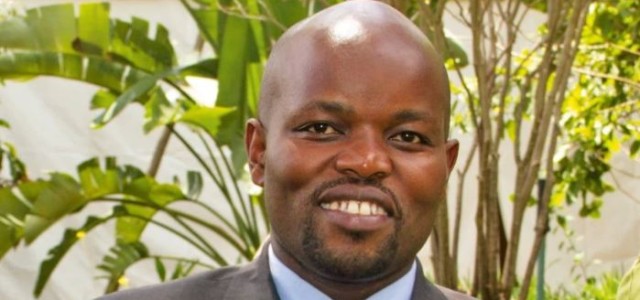H.E. Jean Philbert Nsengimana
Interview with Rwanda’s Minister of Youth and ICTs. H.E. Jean Philbert Nsengimana has extensive experience in managing and developing award-winning ICT solutions, including in health and agriculture.
Briefly summarise how Rwanda is fulfilling its vision for becoming an information-rich and knowledge-based economy and society?
Rwanda has come a long way over the last 15 years since the beginning of its ICTs for development journey. This has involved three consecutive national information and communication infrastructure (NICI) plans, which included: creating a conducive legal and regulatory framework (NICI 1); establishing infrastructure (NICI 2) – including laying over 7,000 km of fibre optic cables, the highest density in Africa; and service delivery (NICI 3).
Over the last 3 years, the number of active mobile phone subscriptions has increased from 44.4% in September 2012 to 75.5% in September 2015. Our latest strategy, the Smart Rwanda Master Plan (SRMP) is about connecting, innovating and transforming Rwanda into a knowledge society. Its pillars range from service-oriented, modern, accountable, real-time (SMART) agriculture, finance, trade and industry, health, education, government, and women and youth empowerment in technology. It is crucial that the government drives job creation and Rwanda’s global competitiveness, based on an open and innovative smart economy with a favourable business climate that attracts large-scale investments and rewards entrepreneurs; enabling growth and exports.
How will Rwanda become an ICT hub in the region? What are the key steps needed to achieve this?
Our vision is for our people to have access to the relevant technologies, opportunities and solutions they need as we become an ICT hub. There are a number of steps which we are taking that suggest Rwanda is on the right path. Firstly, the President and relevant ministries’ leadership has been critical as this has defined a vision for the nation and made ICTs central to socio-economic development. As a result, citizens are mobilised and local/ international private investors also support this vision. The second factor is that Rwanda is promoting innovation through putting in place funding mechanisms for local and international innovators, attracting the best talent to centres of excellence like Carnegie Mellon University and other innovation hubs. Initiatives in digital literacy, which is vital to our vision, are underway to train and certify government employees, teachers, students and the general population. To assist in these efforts, 95% of Rwandans should have access to 4G LTE broadband by 2017. As we use ICTs to create the necessary momentum for growth, we continue to build on our strengths in enabling business, competitiveness and security.
How do government officials make use of social media to deliver better services to local communities?
Rwandan political leaders have embraced the power of social media, such as Twitter for example, to converse directly with local communities. President Paul Kagame is an avid user and with 1.2 million Twitter followers, this demonstrates how our President is keen to exchange, debate and discuss issues with his people on a daily basis. Most government agency websites also make use of Flickr, podcasts and blogging. The government also uses social media to welcome and answer questions from the population as part of its annual national dialogue with Rwandan citizens. Through this dialogue, the President, his cabinet, local government, as well as other officials, are being held accountable for their policies and actions.
In the past, CTA has extensively supported capacity building on Web 2.0 and social media in Rwanda. What could and should be done in future so that rural communities derive maximum benefits from these tools?
CTA has done great work when it brought Web 2.0 training in Rwanda in 2012, which was a starting point for beneficiaries – mainly government officials and NGO representatives – to cope with the era of fast-evolving social media. We considered the CTA training as a beginning for organisations to create more impact with people living in remote areas, especially farmers. We would encourage NGOs, like the Rwanda Telecentre Network (which was a key partner in CTA’s capacity building activities), to be part of the government’s efforts in its digital literacy and awareness campaigns. It is also important to encourage and engage with rural communities in local content development. By coming together with our stakeholders and development partners, we are making progress in transforming the lives of our people.
Source: CTA

